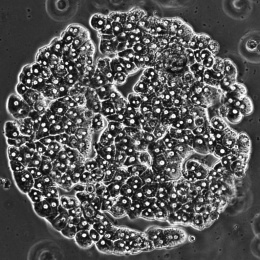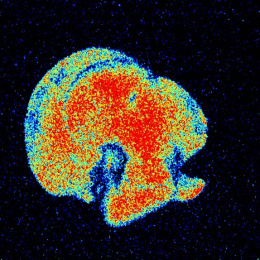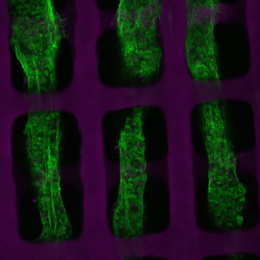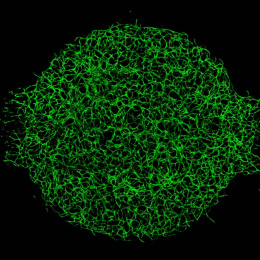Patterned Liver Cells Display Biology-Engineering Convergence
Patterned Liver Cells Display Biology-Engineering Convergence
Submitted by Piyush K. Jain, Tal Danino, and Sangeeta N. Bhatia of the Koch Institute for Integrative Cancer Research at MIT
Koch Institute at MIT, Institute of Medical Engineering and Science
Cells have well-defined microarchitectures in different organs in which they interact with each other to survive and function properly. For example, in the liver, detoxification of food and drugs is significantly dependent on the microarchitecture of hepatocytes (liver cells) and their neighboring cells. Therefore, developing techniques to pattern cells allows us to study the spatial organization of cells and the creation of micro organs. Earlier in our laboratory, micro livers from human cells were successfully implanted in mice to add a functional human liver for testing of drug toxicity that more realistically mimics human physiology. These micro liver models provide a platform to gain a better understanding of the toxicity of cancer drugs as well the progression of liver cancer/metastasis. In this image, we patterned liver cells to create the KI logo with micro-fabrication techniques, which is commonly used by electronics industry to make integrated circuits. This image demonstrates the marriage of engineering and biology towards treatment of diseases and acknowledges Koch Institute for Integrative Cancer Research for flourishing the environment.






